Typhus along with pox and the plague(pest) is one of the most infamous diseases of the world responsible for claiming many human lives during history.
Typhus is a zoonotic disease which means that transmission of the disease is caused by animals such as fleas and ticks(this isn’t limited to insects. Monkeys, bats are also representative hosts for zoonotic diseases) to humans.


Typhoid Fever and Typhus are often confused as the same disease because they share a similar pronunciation. Also, often times Typhus is called Typhus Fever which causes even more confusion. However, these two have nothing in common.
Different bacteria groups are responsible for each disease and while Typhoid Fever is a water-borne disease that is transmitted usually by contaminated water sources, Typhus is a zoonotic disease that is transmitted from animals to humans.[1]
Also, there aren't any available vaccines for Typhus while there are vaccines available for Typhoid Fever
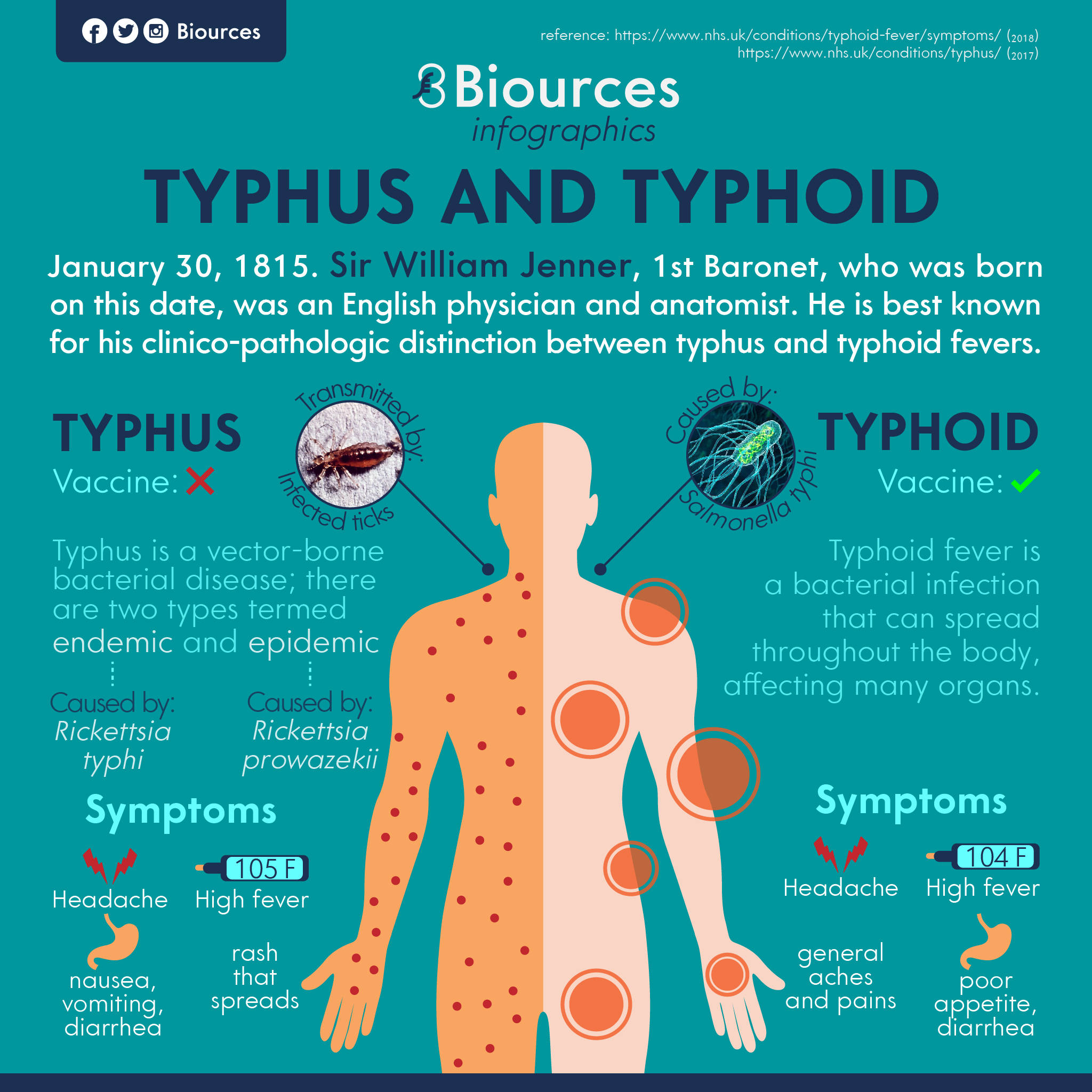
Overview of Typhus(Typhus Fever)
The most representative type of Typhus is the ‘Epidemic Typhus’ which is transmitted by lice. Endemic (or also called murine) Typhus has less infective potential than Epidemic Typhus and in general known to be less severe than Epidemic Typhus. Usually, Endemic Typhus is transmitted by flea hosts.
Scrub Typhus (Also known as tsutsugamushi disease) is infected by mites and Tick Typhus are spread by ticks. Recently, Scrub Typhus is often classified as a separate different disease from typhus because the bacteria group responsible for Scrub Typhus has diverged from the Rickettsia bacterium.
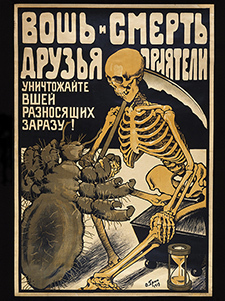

General Characteristics of Typhus
In general, Typhus is a zoonotic disease transmitted to humans by lice, fleas, mites or ticks that carry the Rickettsia bacterium (Recently, for scrub typhus the Orientia tsutsugamushi. Bacteria diverged from the Rickettsia bacterium so scrub typhus may be treated as a different disease from Typhus.
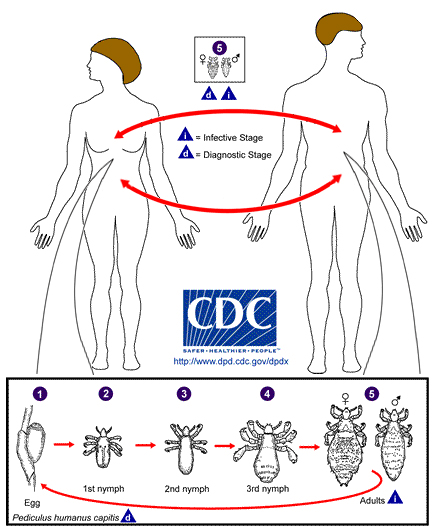
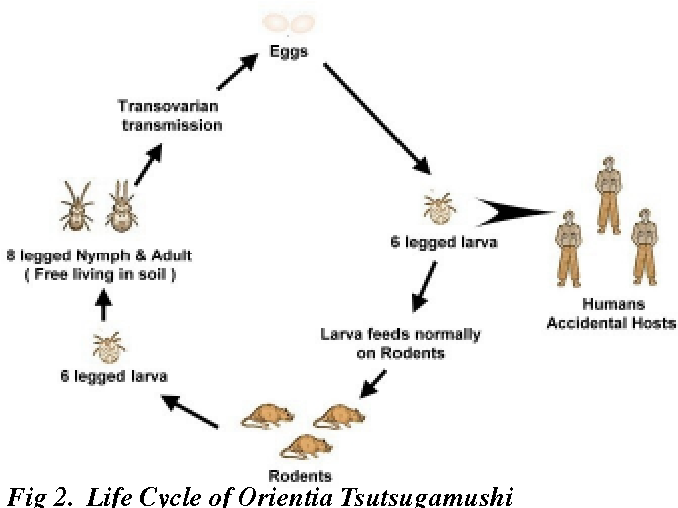
However, both still share similar symptoms). Typhus accompanies a series of rashes, toxemia (accumulation of toxins within the human bloodstream) and other symptoms such as pain and fever.
Typhus could develop to more fatal cases such as organ failure, sepsis and pneumonia. However, the general improvement of hygiene and development of medical knowlege significantly reduced infection and fatality as well.
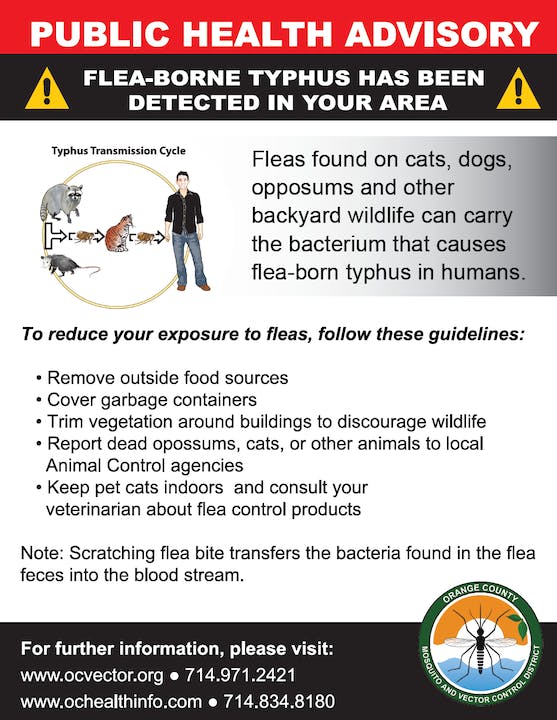
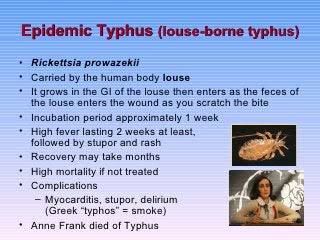

Epidemic Typhus (General Typhus) – Lice
Epidemic Typhus is the most representative Typhus and in general the term ‘Typhus’ refers to Epidemic Typhus. Epidemic Typhus has been responsible for the death of millions of people in history.
The bacterium Rickettsia prowazekii causes Epidemic Typhus which is often carried by lice(in particular, Pediculus humanus humanus).
These lice would penetrate through the epidermis of a human that could directly contact the mesenchymal cells or blood stream as they consume human blood.
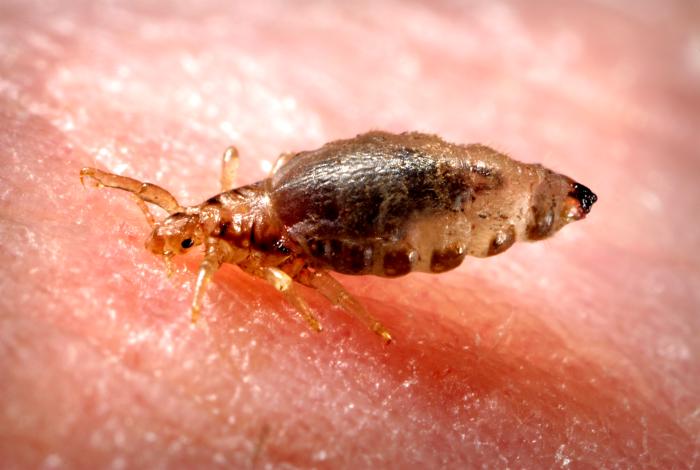
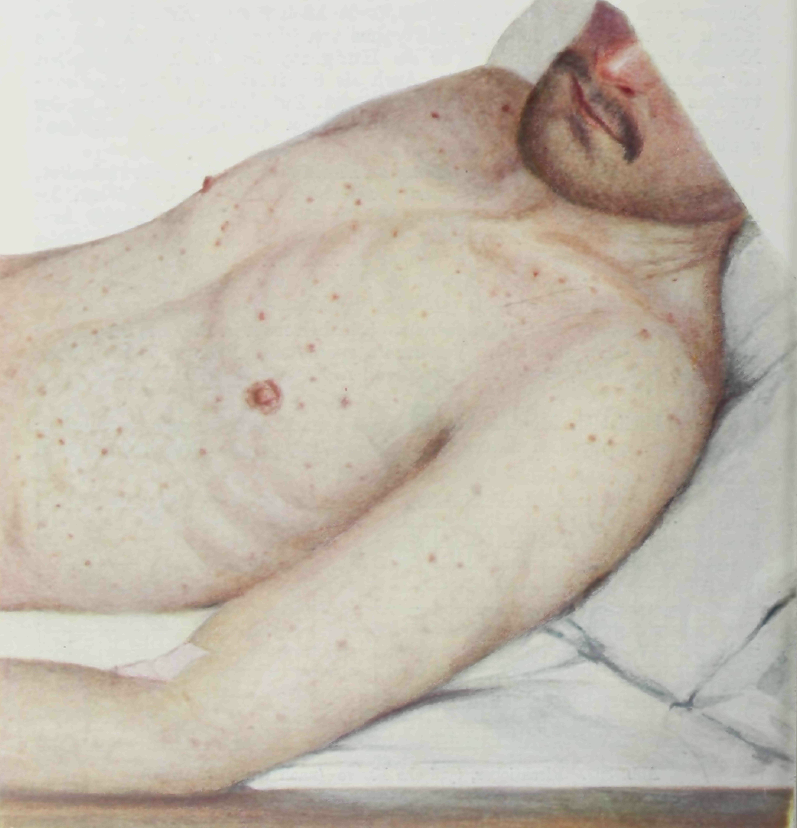
The Rickettsia prowazekii bacteria that resides in lice could access the blood stream breaching the 1st line of immune defense of epidermal cells directly by the lice’s bite.
Rickettsia bacteria could persist in dried dead lice for a couple of days and even able to persist in the air or clothing and textile of humans where it could spread to other hosts and humans.
Also, the lice itself could easily relocate from one host to another which makes Epidemic Typhus a highly contagious disease.


It takes about 5 days to two weeks for the host to develop symptoms. Infection of Rickettsia bacteria causes ‘Typhus Rash’ which provokes the host to scratch itself which would eventually expose the host to additional bacteria infection. The infection also accompanies severe fever, loss of appetite leading to malaise (general weakening).
This infection and symptoms would weaken the host’s general health and lead to organ failure, sepsis and secondary infections.
Epidemic Typhus is responsible for claiming many lives during the Napoleonic Wars, Great famine and even throughout World War I and World War II.

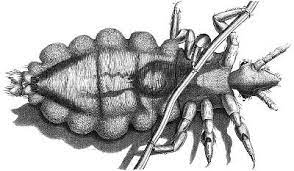
Thanks to Charles-Jules-Henri Nicolle’s discovery, treatment with chloramphenicol and tetracycline were developed that controlled mass infections in crowded places such as concentration camps during World War II. [2]
Anne Franke, well known for her diaries that depicted the horrors of the Hollocaust along with her sister Margot are were suspected to have been killed by Typhus infection.
Improvement in hygiene and life standards led to a significant decrease in Typhus infection.

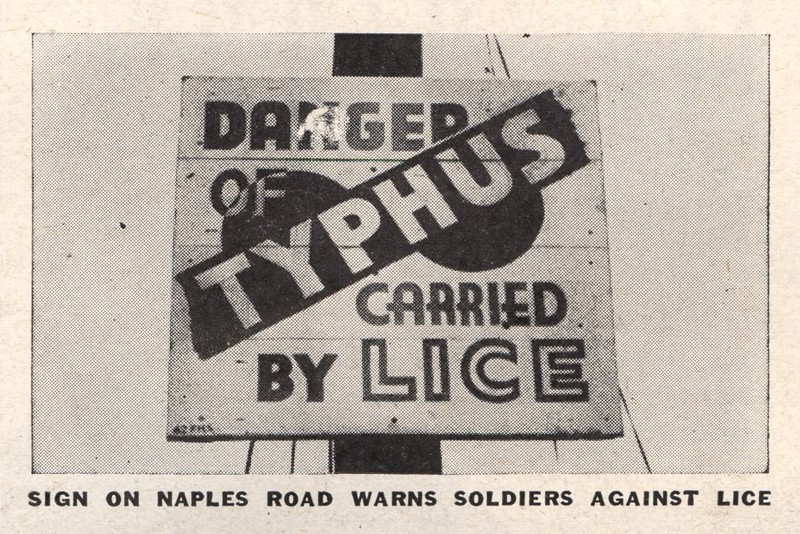
However still, there are reports of Typhus infections by lice transmission from live animals such as flying squirrels (Glaucomys Volans). Currently, prescription of doxycycline which is a similar antibiotic with tetracycline is enough to treat Typhus infection as it isn’t a deadly disease as it used to due to the improvements of hygiene and life conditions.
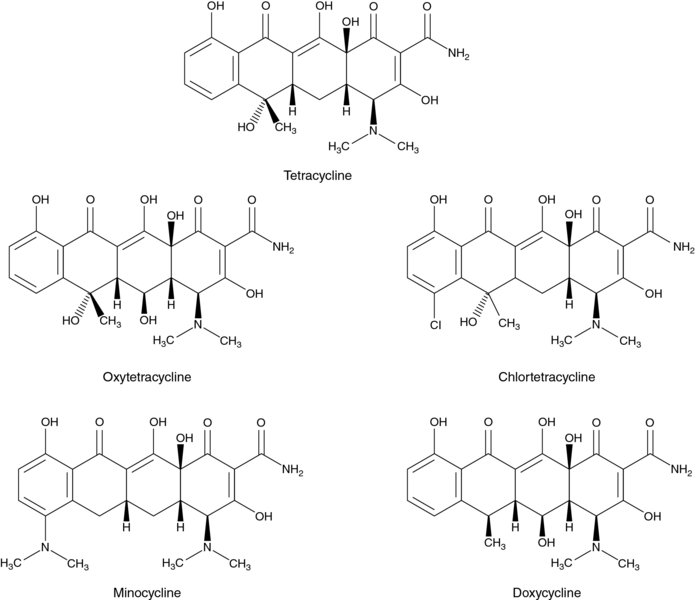
Brill-Zinsser disease
The Brill-Zinsser disease also called recrudescent Typhus is a disease caused by initial infection Typhus bacteria (Rickettsia prowazekii) that was intact for substantial period. In general, the symptoms of Brill-Zinsser disease are mild than Typhus and could be treated easily with doxycycline.
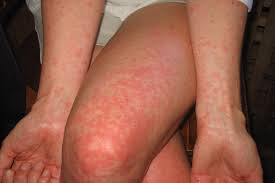

Endemic Typhus (Murine Typhus) - Flea
Endemic Typhus or also called Murine Typhus (Murine refers to rodents which are rat like animals) is an infection caused by the bacteria group Rickettsia typhi. These bacteria are transmitted from rodents that are infected by rodent flea called Xenopsylla cheopis to humans by contact.
The term ‘endemic’ refers to a mass infection within a region or community while the term ‘epidemic’ refers to a mass infection in a much broader region.
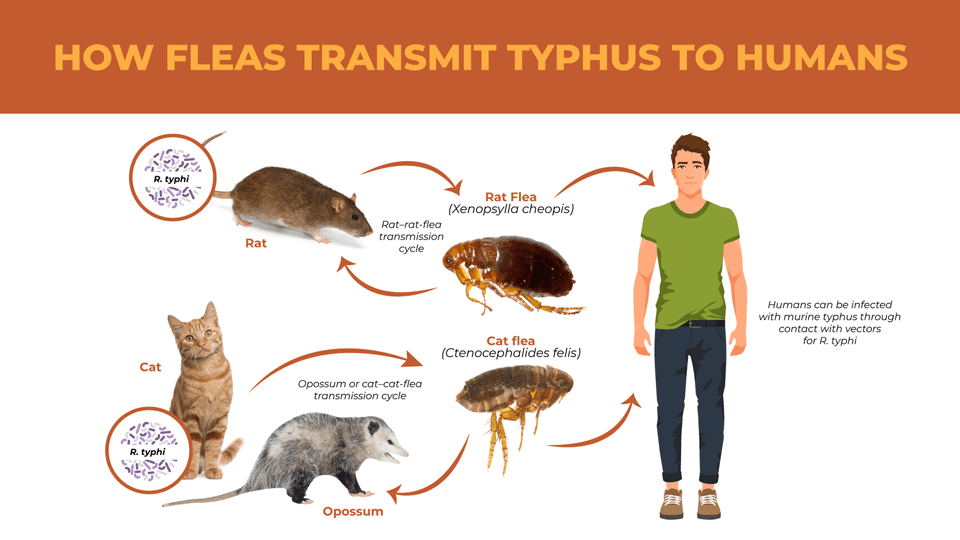
Endemic Typhus may be less contagious than Epidemic Typhus as it isn’t transmitted by human-human contact. The droppings of Flea (also known as Flea dust) or a direct bite by an infected flea would transmit Rickettsia typhi causes Endemic Typhus.
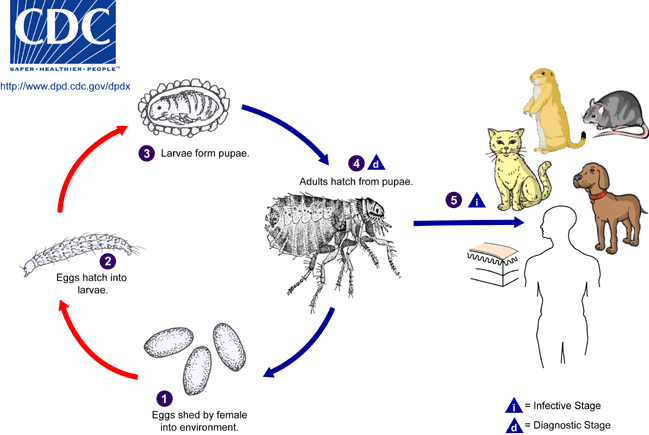

Endemic Typhus accompanies similar symptoms with Typhus; however, it rarely develops fatal symptoms (but it still has the potential to develop into sepsis, organ failure etc) so the fatality rate of Endemic Typhus is lower than Epidemic Typhus.
The improvement of hygiene conditions also led to a significant natural decrease of infection. Upon infection, prescription of doxycycline could easily help for recovery.
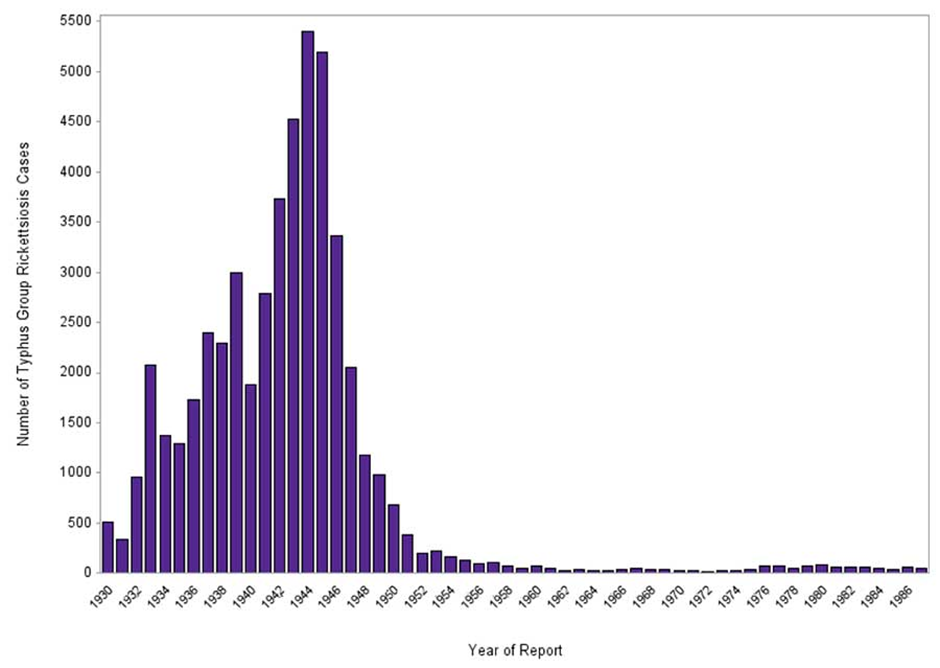
Scrub Typhus (Tsutsugamushi disease) – Ticks and Mites
Scrub Typhus is often classified as a different typhus as the bacteria group Orientia tsutsugamushi responsible for Scrub Typhus has diverged from the Rickettsia bacterium group. Scrub Typhus is also known as bush typhus as it is transmitted from contact with ticks in the wild.
Scrub Typhus infection is often reported in Asian regions such as South east Asia, China, Japan, Korea and Northern parts of Australia.
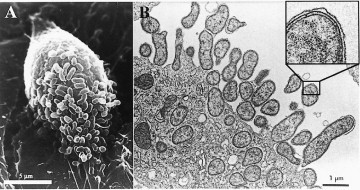

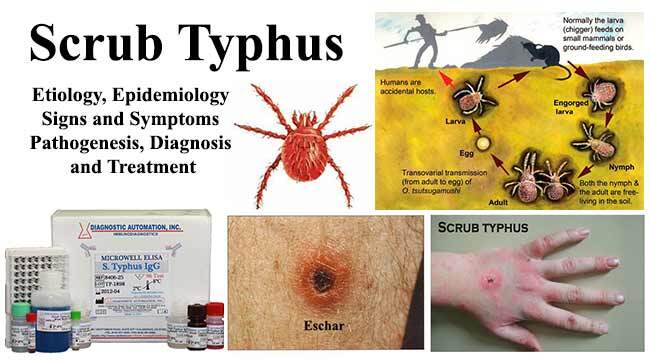
Scrub Typus symptoms might appear after 5 ~ 10 days after infection and accompanies general pain, fever, rash and enlarged lymph nodes that could develop to more fatal reactions such as organ failure.
Scrub Typhus could also be easily treated with Doxycycline. While traveling in Asian countries, direct epidermal contact with the vegetation requires caution due to Scrub Typhus.
Other types of mites such as Leptotrombidium pallidum, L. fuji, L. scutellare, and L. akamushi may cause scrub typhus as well although these species are rare.
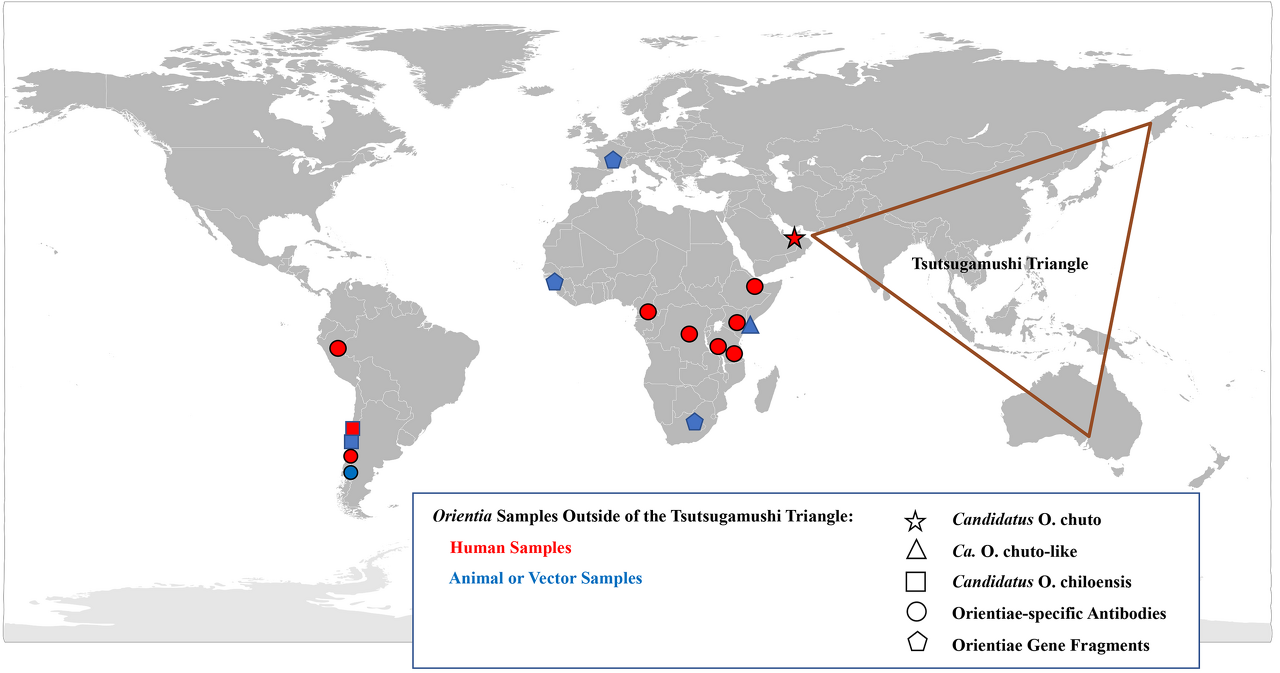
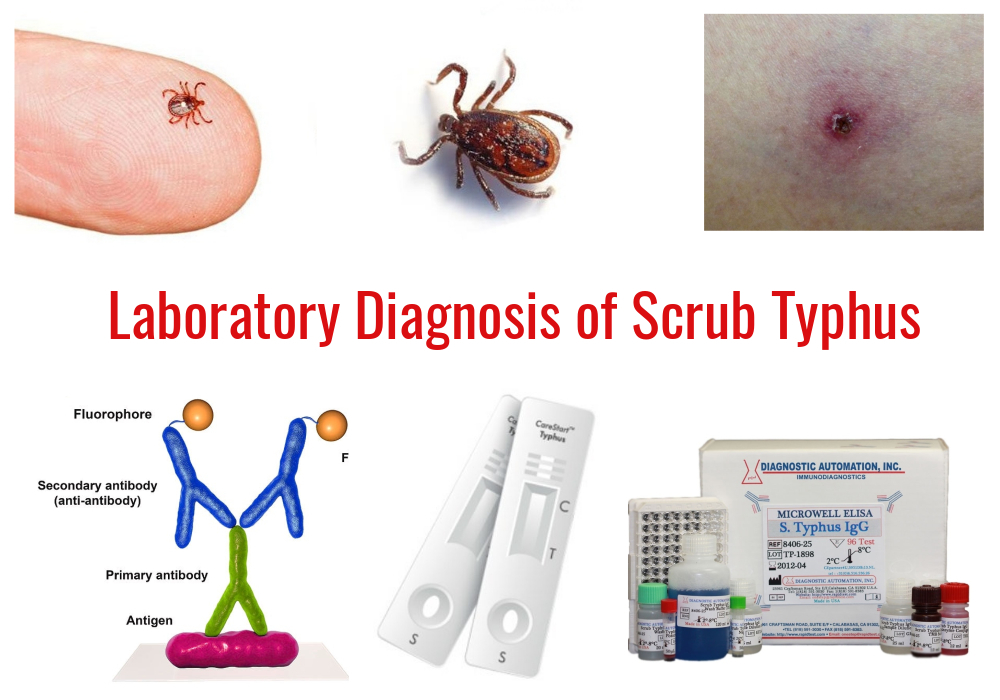
[1] “Information for Healthcare Providers.” Centers for Disease Control and Prevention, Centers for Disease Control and Prevention, 29 Mar. 2021, https://www.cdc.gov/typhus/healthcare-providers/index.html.
[2] “The Nobel Prize in Physiology or Medicine 1928.” NobelPrize.org, https://www.nobelprize.org/prizes/medicine/1928/nicolle/lecture/.
'Biotechnology > Medical & Biotechnology' 카테고리의 다른 글
| 비브리오 패혈증 - 어패류와 조개를 조심하라! (0) | 2023.04.15 |
|---|---|
| Vibriosis – Beware of Shellfish! (0) | 2023.04.14 |
| 티푸스 - 장티푸스와 티푸스는 전혀 관련 없다. feat. 쯔쯔가무시병 (0) | 2023.03.26 |
| 장티푸스(Typhoid Fever) - 흔한 수인성 감염병 feat 장티푸스는 티푸스와 전혀 관련이 없다. (0) | 2023.03.20 |
| Typhoid Fever - Most common waterborne disease feat. Typhoid Fever has nothing to do with Typhus (0) | 2023.03.20 |



